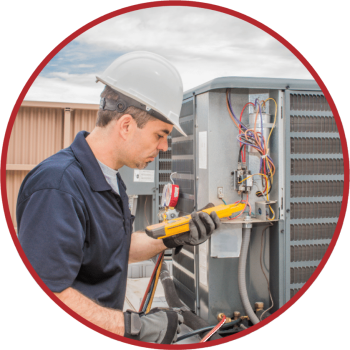The fall 2025 cohort registration is now closed. You can fill out the form below to be notified when we start enrolling for 2026!
Program at a Glance!
|
An HVAC Installer Helper assists the lead installer or technician with tasks such as carrying materials, setting up tools, and handling basic installation tasks like connecting ducts, installing insulation, or cutting and bending metal components. They are typically involved in the physical aspects of installing HVAC systems rather than diagnosing or repairing them. This role usually requires less experience and is considered an entry-level position. While some basic knowledge of HVAC systems is beneficial, helpers learn a lot on the job. Helpers work alongside more experienced installers or technicians and may handle the more physically demanding tasks. Their work is usually more hands-on and focused on assisting with the installation rather than troubleshooting.
After completing this program, learners will be able to:
- Explain the importance of workplace safety, safe work requirements, workplace hazards, prevention methods, emergency response procedures and appropriate PPE
- Solve construction-related problems using basic math and common measuring tools
- Safely and properly use the proper hand/power tool for construction-related tasks
- Correctly read and interpret various types of construction drawings including standard fundamental components, features, symbols, and dimensions
- Identify and describe use of various types of rigging slings, hardware, and equipment including use of proper ASME Emergency Stop hand signal
- Effectively communicate, listen, speak, read, and write to meet workplace expectations and communication goals
- Apply workplace skills such as critical thinking, problem solving, interpersonal skills, conflict management, and team member skills
- Identify standard procedures for safely and properly handling common materials found on work sites, including lifting, tying knots, and using motorized and non-motorized material handling equipment
- Explain the basic principles of heating, ventilation, air conditioning, and refrigeration including principles that guide HVACR installation and service techniques
- Identify career paths available in the HVACR trade
- Accurately perform measurement tasks, algebra equations, and calculations involving geometric figures relevant to HVACR
- Explain the fundamentals of electricity and electrical theory • Use the proper instrument to measure HVACR components
- Assemble and test low-/high-voltage series and parallel circuits using a transformer and selected control and load devices
- Explain the fundamental concepts of heating and combustion, forced-air gas furnaces, hydronic and electrical heating systems
- Perform common maintenance tasks on a gas furnace, including air filter replacement and temperature measurements
- Explain the fundamental concepts and functioning of refrigeration, refrigerants, cooling systems, and common controls
- Perform measurement/calibration tasks for cooling systems • Identify refrigerants using cylinder color codes
- Explain concepts related to air movement/measurement in air distribution systems, mechanical equipment/materials used, and the various approaches to air distribution system design
- Identify the various types of copper tubing and related fittings
- Properly and safely cut, bend, and join copper tubing using mechanical fittings and lengths of plastic pipe • Properly set up and shut down oxyacetylene equipment and an acetylene single tank
- Properly prep and safely solder copper tubing in various planes, using various fittings
- Properly prep and safely braze copper tubing using various fittings
- Properly and safely cut, ream, thread, and join steel pipe using selected fittings
- Environmental Protection Agency (EPA) Rules and Regulations related to HVAC practices
- EPA requirements for small appliances, refrigerants and hazardous chemicals
Certification Opportunities
After completing this program, learners will have the opportunity to take the leading national/industry-recognized certification exam(s) essential to entry-level employment in this fast-growing field.
Environmental Protection Agency (EPA) Section 608 Technician Certification



